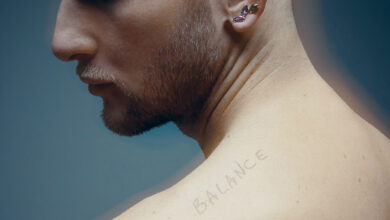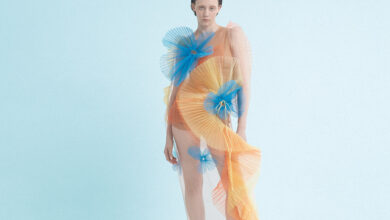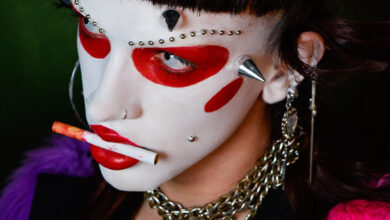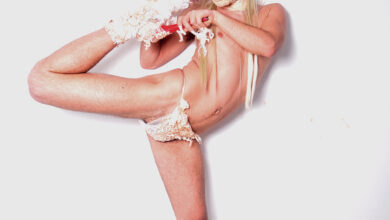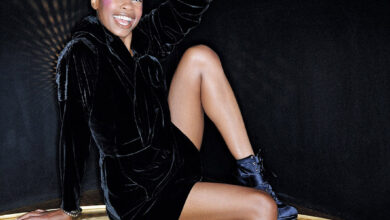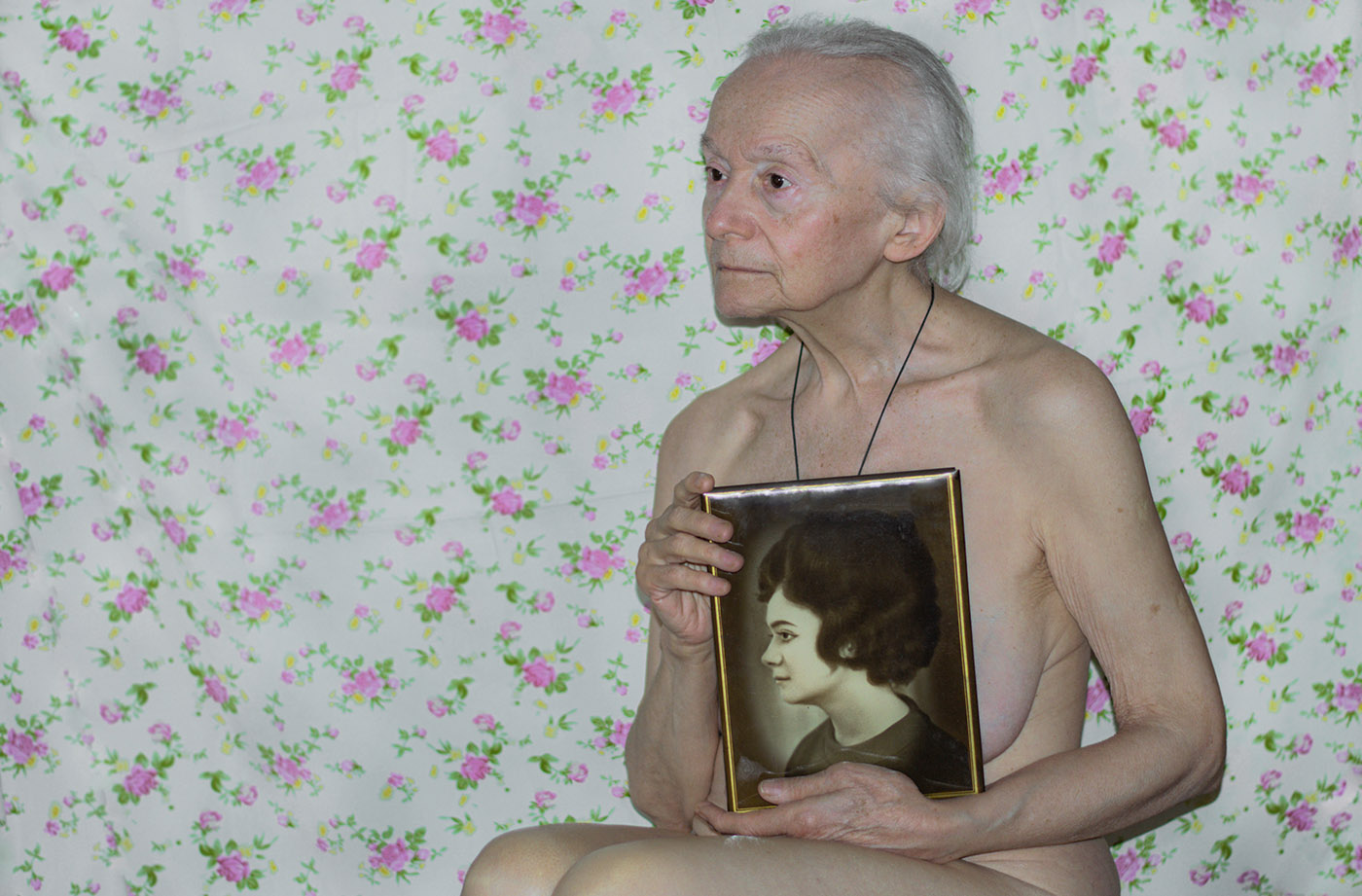
Maya Makeeva, a Ukrainian photographer, researcher and teacher of the history of photography, has blazed a distinct path in the field of visual storytelling. Her journey unfolds like a narrative, passing through personal revelations, social changes and artistic metamorphoses and her projects, including “Liberation” and the “Ukrainian Photodiary”, serve as poignant visual narratives of Ukrainian life amidst conflict.
Photography Maya Makeeva
Words by Letícia Lima
Since the beginning of the large-scale invasion of Ukraine, the life of Maya Makeeva, a Ukrainian photographer from Odessa, has been a daily struggle between artistic creation and the shadows of war. Born and raised in Odessa, Maya found her passion for photography from a very young age. Her personal and professional journey is a testament to human resilience, as she navigates the complexities of war and art in her homeland.
Before the war, Maya explored artistic photography, delving into the realms of surrealism and nudity. Her work transcends the visual, exploring deep questions about body acceptance and society’s perception of nudity.
Maya uses her photography as a way of documenting life in the midst of chaos, exploring themes ranging from body acceptance to the search for national identity. Her projects are visual testimonies to the struggles and triumphs of the Ukrainian peoples as they face the challenges of war.
One of Maya’s projects is titled “Liberation”, a sensitive exploration of the relationship between individuals and their aging bodies. Inspired by her own experiences and the stories of others, Maya uses photography as a tool to examine the acceptance of the body in all its forms. Nadezhda Aleksandrovna, a central figure in this project, embodies freedom and courage in the midst of adversity, as she faces cancer and breaks free from society’s expectations.
Within this project, Maya incorporates symbolic elements such as apples and flowers to deepen the narrative.The apple, steeped in ancient symbolism of youth and longevity, serve as a reminder of the passage of time and the quest for eternal youth. Meanwhile, the presence of flowers underscores the transient nature of youth, yet celebrates the beauty found in every stage of life’s journey. Through her lens, Maya invites viewers to contemplate the complexities of aging and find liberation in embracing the natural evolution of the human body.
At the beginning of the war, I left my home and moved in with my late grandmother’s husband, Andrei. At that time, my grandmother was still alive and they lived together, but a month before the start of the war, Andrei’s sister, Nadezhda Alexandrovna, came to Ukraine. She came from Georgia for treatment for oncology. The four of us lived together for three months. One evening I invited her to participate in my project, which I wanted to devote to researching a person’s attitude towards the aging naked body. This is how the “Liberation” series appeared.
— Maya Makeeva
In addition to “Liberation”, Maya is also a curator for the project “Ukrainian Photodiary”, an initiative that aims to document the changes in the daily lives of ukrainian since the start of the war. This project allows professional and amateur photographers to capture reality in the midst of chaos, preserving the stories for future generations. The project is currently being exhibited in a church in the city of Olten ( Switzerland) until May, and as well as offering a digital exhibition, the photographs will be shown and sold abroad, with all the profits generated by the project benefiting the victims of the war in Ukraine.
ZOOT had the opportunity to do an interview with Maya, who offers an in-depth look at her journey as a photographer, from her origins in Ukraine to her artistic evolution in the midst of war. Her message resonates across borders, inspiring hope and empathy in a world currently gripped by division and conflict.
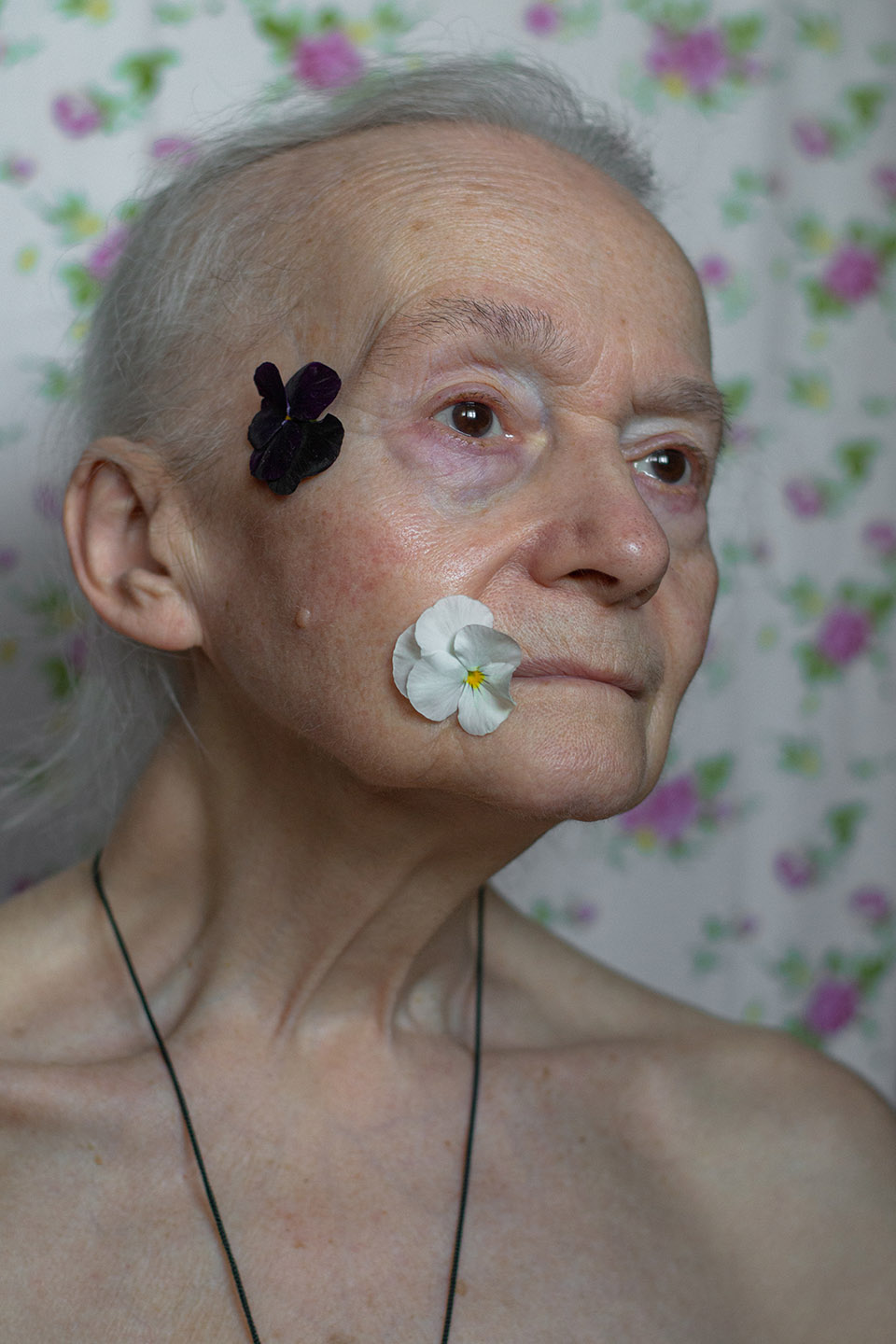
ZOOT: Can you provide a brief overview of your personal and professional background as a Ukrainian photographer, researcher, and lecturer on the history of photography?
Maya: The first time I got my hands on a camera was when I was 10 years old. I became more deeply interested in photography at 15, and at 22 I finally realized that I wanted to dedicate my life to photography. After graduating from medical university, I did not want to work in my specialty, but chose to be a freelance photographer. Before the war, I was interested in artistic photography, namely surreal and nude photography. Working in these genres, I raise questions that interest me. Surreal photography helps me understand the absurdity of the reality in which I find myself, and nude photography helps me understand society’s attitude towards the naked body and a person’s attitude towards his own body, its acceptance or non-acceptance. Sometimes I work at the intersection of these areas and look for answers to questions that lurk in my subconscious. With the beginning of the full-scale invasion of the Russian Federation into the territory of Ukraine, I began to engage in documentary photography. Today I photograph changes in the lives of Ukrainians in various areas.

ZOOT: Considering the challenges posed by the war, what are your hopes and aspirations for the future of Odessa?
Maya: Odessa is located 200 kilometers from the occupied territories and is considered a relatively peaceful city, as far as possible in war conditions. Residents of the city, including me, are very tired of the shelling and the war in general. I really hope that in the near future the hostilities will stop and we can all breathe a sigh of relief. I understand that we won’t be able to return to our old life, but I would like us to find some kind of stability, so that Odessa will again be famous throughout Ukraine as the most beautiful sea city.

ZOOT: How do you feel living in Odessa today? How has your perception of the city, its residents and its surroundings changed in the past months?
Maya: Being in Odessa, I feel relatively safe, since I grew up in this city and this is my home. However, at the same time I am afraid that I might lose this house. I am sad that a certain part of the cultural heritage has been destroyed, sad that there are too many deaths and the largest cemetery in Odessa has increased several times and each of us has friends who died in this war. Regarding the residents, on the one hand, the level of patriotism has increased and this is encouraging, but on the other hand, for a certain proportion of people, patriotism has turned into unhealthy patriotism, which is aimed at the cult of death and the promotion of violence. Such people disgust me and I fear them, since you can expect anything from them.

ZOOT: Can you describe the impact of the war on your daily life? How has your mood and sense of security been affected by the war?
Maya: The war has penetrated into all areas of my life and my every day begins with the thought that life does not belong to me and we walk side by side with random death. If before I didn’t really follow the news, now my morning usually starts with reading the news feed. My anxiety has increased significantly and I become especially anxious in the evening, since Odessa is usually shelled at night. When the air raid alert starts at night, I start to panic and I go into the corridor of the apartment because I have no shelter nearby. At such moments, I think if only fragments of drones or missiles do not hit my house and I stay alive. When I read the news that shrapnel hit another house, I exhale that today I remained unharmed, but at the same moment someone else was hurt, and I understand that this time trouble passed me by, but there is no guarantee that next time I won’t be in the place of the victims. It scares.

ZOOT: As an artist, how do you perceive the role of art in providing solace, commentary, or a platform for reflection during the war?
Maya: Art plays a huge role in shaping the mood in society during the war. However, in some cases, art is a tool for reflection on what is happening, and in other situations, it is a tool for promoting the culture of evil and violence, which I mentioned above. Perhaps, based on my answers, the viewer will think that I am a pessimist, but I consider myself a realist. It is incredibly painful for me to observe what metamorphoses contemporary art is undergoing in our Ukrainian realities. I always advocate that creativity is about creation, and not about destruction and hatred, and with our works we must show that we are superior to those with whom we are at war. They destroy, and we create, but unfortunately, by promoting violence and cultivating hatred in our hearts, we risk falling to the level of our opponents.

ZOOT: How has your artistic focus evolved since the start of the full-scale invasion, and what motivated this shift from surrealism and nudes to documentary work?
Maya: On February 25, 2022, the second day after the start of the war, on one of the facades of the building I saw the inscription “I don’t want to be afraid.” This phrase really stuck in my head and I realized that I don’t want to be afraid, but I want to be useful. Everyone then decided to be useful in their own way – some at the front, some in the rear. It was important for me to record what was happening around me, how our usual life stopped and what metamorphoses our society began to endure, without wanting it. Then I didn’t yet know that I would subsequently be involved in archiving documentary photographs within the framework of the “Ukrainian Photographer” project and show the world what was happening in Ukraine.

ZOOT: “Liberation” is a captivating exploration of the relationship between individuals and the aging body. What inspired this project, and how did Nadezhda Aleksandrovna become the central figure in it?
Maya: A couple of years ago, I posted nude pictures of myself on my Instagram profile for the first time, after which I was faced with both positive and negative feedback. I was surprised why people react so negatively to nudity. The photographs were not pornographic or erotic in nature, but demonstrated acceptance of my body, which came quite simply to me. From that moment on, I became interested in exploring the topic of society’s perception of the naked body. If a young body has received so many negative reactions, then how will people react to an aging body, because aging is a taboo topic for society. This is how the idea of the “Liberation” project was born, in which Nadezhda Aleksandrovna happily agreed to participate. Communication with her made me understand that all her life she did not live the way she wanted, as those around her demanded. The project became an opportunity for her to free herself from any prejudices that she had encountered throughout her life.

ZOOT: Collaborating with someone undergoing chemotherapy is undoubtedly a sensitive process. Can you shed light on the collaborative aspects of creating “Liberation” with Nadezhda, and how her active participation shaped the series?
Maya: Sometimes it seemed to me that I was more embarrassed than Nadezhda in our work together. At that moment, I still felt awkward when I saw a naked person in front of me, but Nadezhda behaved confidently and was not embarrassed by me. I felt comfortable working with her and during the photo shoot she told me how tired she was of living her whole life the way others wanted, and not the way she herself wanted. She taught me to act as I first of all wish, otherwise at the end of my life I might regret the missed opportunities. I was amazed at how bravely she endured chemotherapy. For me, this is an indicator of how great a person’s thirst for life is.

ZOOT: How do you strategically utilize symbolic elements, such as apples and flowers, in your photography to convey narratives?
Maya: I don’t really like art in which the author gives too direct answers to the questions he raises in his works. This deprives the viewer of the opportunity to interpret the work in accordance with their internal needs. This solution seems primitive to me, so I like to use symbols and various allegories in my work. I always wonder how the viewer will come to the solution to the symbol that was used in the work and whether he will be able to interpret it in such a way as to get an answer to the question that interests him. This way, I always leave the last word to the viewer.

ZOOT: Could you delve into the significance of the term”Liberation”in the context of Ukrainian photography. How did this concept of liberty manifest in the work of Ukrainian photographers during that period?
Maya: The history of Ukrainian photography can be divided into three periods: imperial, Soviet and modern. The Soviet period of the development of Ukrainian photography is not much different from the development of photography in other countries that were part of the USSR, since there was a single paradigm for using photography not as a tool of self-expression, but as a tool of propaganda. Not all Ukrainian photographers of the 20th century liked this approach, so in the 80s the Kharkov school of photography was born, headed by Boris Mikhailov, which would later become famous throughout the world for its non-trivial approach to photography. Kharkov photographers precisely pursued the goal of freeing themselves from the stereotypes imposed by top management that photography is necessary only to create an ideal picture of a non-existent life. With their techniques they showed real life and ridiculed the absurdity of staged propaganda photography.

ZOOT: You mentioned feeling emotional burnout from documentary work and you have turned again to surrealist photography. How does “Liberation” represent this return to your artistic roots, and what emotions or themes are you exploring in this project?
Maya: Fine art photography helps me escape from reality and turn away from the world for a while and turn inward towards topics that have been bothering me for a long time. As I already wrote, through nude photography I study a person’s attitude towards their body. During war, we suffer mentally, if we do not take into account injuries as a result of direct military action. Being subjected to constant stress, the body suffers not the best changes, which often do not depend on us. It is important for me to record how a person’s perception of his changed body changes, and how he accepts or does not accept the current situation. The Liberation project became the starting point in studying this issue, which is how I created this project at the beginning. When I return to it, I think to myself: “stop, breathe and continue to look for answers to the questions that concern you.”

ZOOT: As a curator of the “Ukrainian Photodiary” project, could you elaborate on its purpose and how it aims to document the changes in the everyday life of Ukrainians since the beginning of the war?
Maya: The project “Ukrainian Photodiary” is a Swiss-Ukrainian photo project that is aimed at recording and archiving the changes that occur in various fields of activity after the start of the full-scale invasion of the Russian Federation into the territory of Ukraine. The project was created by Swiss photographer Patrick Lüthy at the end of 2022 and since he does not speak Ukrainian, he was looking for someone who would help him realize his idea. This is how our collaboration with him began. The project is unique in that not only professional photojournalists, but also amateurs and even children can join it. Also, “Ukrainian Photodiary ” pursues charitable goals and we direct all donations to help affected single mothers in this war. As photographers, as journalists, we want to be useful during these difficult times.

ZOOT: Looking into the future, what is the long-term vision for the “Ukrainian Photodiary” project, and how do you foresee its impact in preserving the collective memory of this period in Ukrainian history?
Maya: The project has a documentary direction and this helps us record what is happening in Ukraine without distorting reality, only facts. Photographs do not manipulate consciousness; this makes it possible in the future to create an archive of real-life events and not allow us to change our memories, since we all know very well that history is written by the victors. And if, on the one hand, the age of digitalization plays into the hands of propaganda, then our task, as a documentary project, is to collect evidence for posterity and not allow propaganda to win.

ZOOT: What message or emotions do you aim to convey to viewers through your art? What do you hope people take away from your work?
Maya: Often in my work I use repetitions and combine colors and shapes in different ways, changing images over and over again. This makes it possible to give a sense of permanence, as the objects remain the same, but at the same time show how changeable everything is and changing one part can completely change the context. Thus, I want to show the viewer that the feeling of managing one’s life is quite suspicious. We seem to be in control of the situation, but at the same time the situation either controls us, or leads its own trajectory into which the person does not fit. This evokes a feeling of absurdity in me, and I try to evoke the same emotions in the viewer in my works.

ZOOT: Could you share your plans for the future of your artistic journey?Are there specific projects, themes, or initiatives you’re looking forward to exploring in the coming months or years?
Maya: After my grandmother died a year ago, I realized that I knew very little about my family tree. I knew that Tatar blood flows in me, but I know practically nothing about my origins. Unfortunately, while my grandmother was alive, I had little interest in my family and missed out on a lot. Now, in order to maintain some connection between me and my grandmother, who was the closest person to me, I started working on the photo project “Roots”, through which I am working to find my national identity. I have lived in Ukraine all my life, but my family has Eastern roots, I follow some traditions of my family. It is important for me to understand who I really am and in which direction I am drawn more: the direction that determines my consciousness and my passport; or a direction that was created by my subconscious, and it in turn is based on the collective memory of my ancestors?!
To boot…
Maya Makeeva
Ukrainian photo diary

